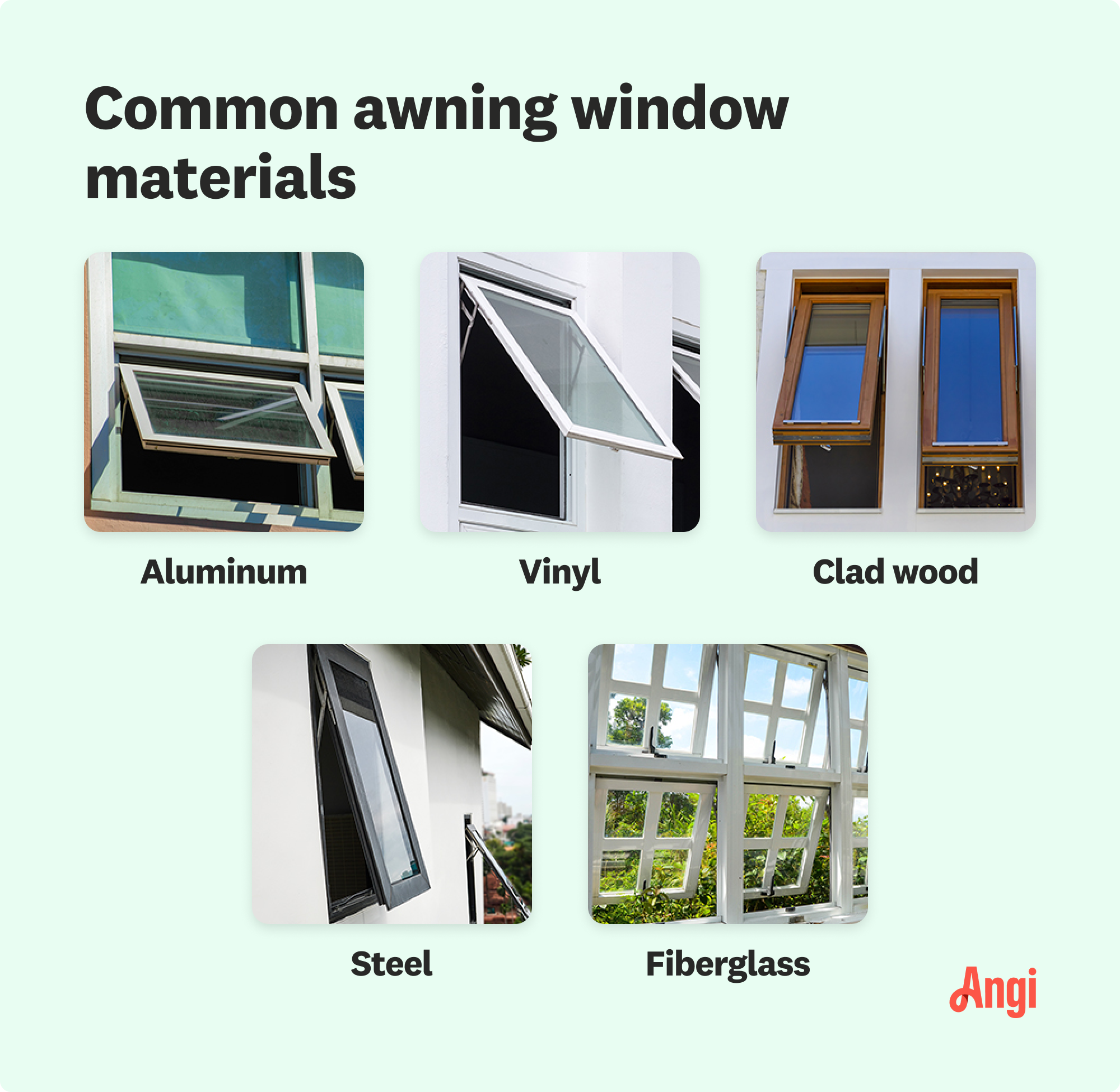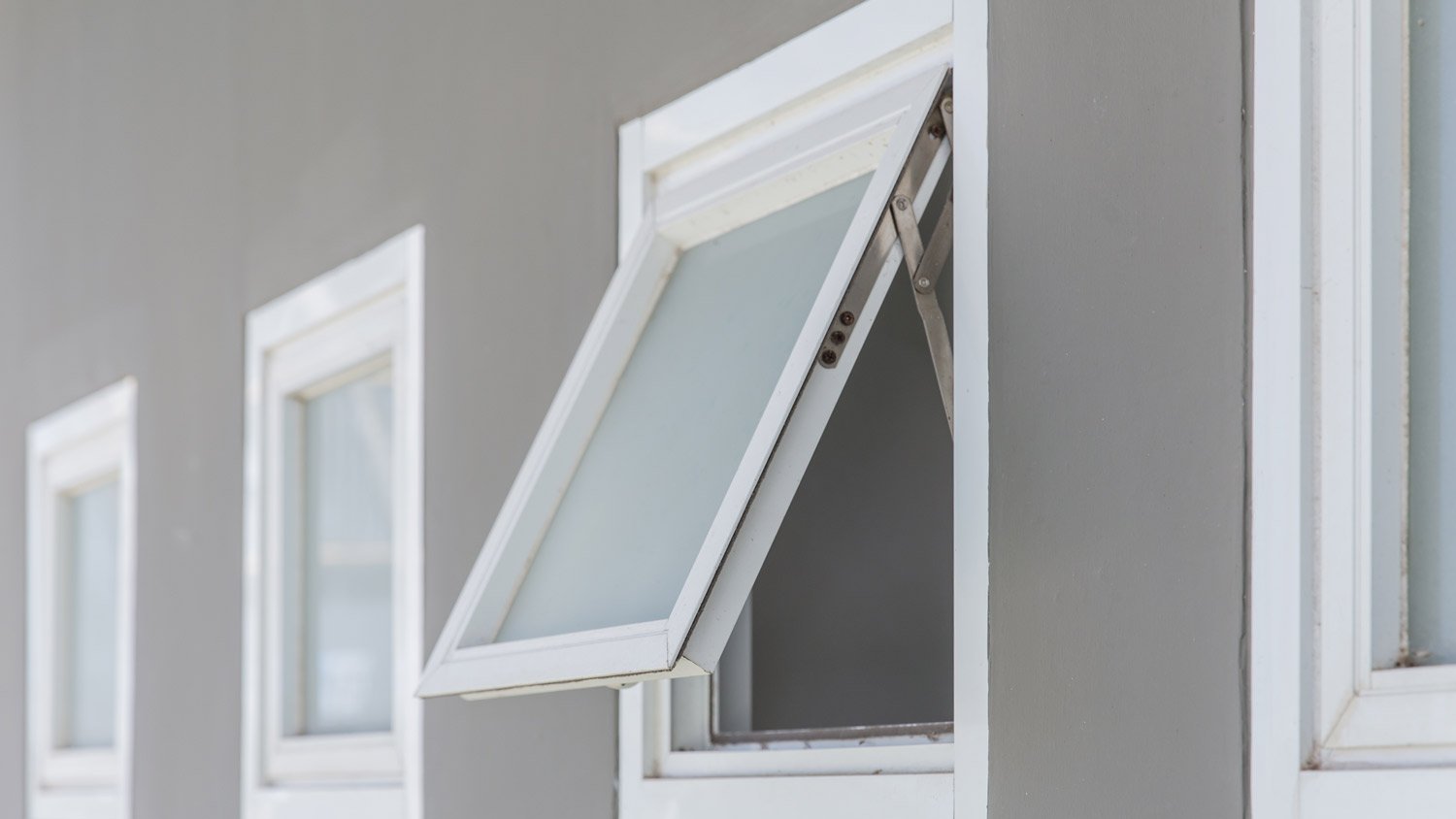What Are Awning Windows and Are They Right for Your Home?
Awning windows let light in while keeping the elements out


Awning windows have a hinge at the top and a crank at the bottom.
You can install them in kitchens, bathrooms, bedrooms, and more.
They can offer privacy while helping with air circulation.
Awning windows are more energy-efficient than sliding ones.
You can’t use awning-style windows as an escape route in an emergency (as an egress window).
When you’re replacing an existing window or adding a new one to your home, it can be challenging to decide which kind of window will work best in your home. If you want a window that increases airflow, protects against rain, and lets in plenty of natural light, an awning window might be exactly what you’re looking for. Learn more about these windows, what they cost, where to install them, and how they stack up against other types of windows.
What Is an Awning Window?
First things first: What is an awning-style window? These rectangular-shaped windows have a hinge at the top and open outward from the bottom using a cranking mechanism. They’re bigger in width than they are in height, so they’re often installed along the upper part of a wall.
Awning windows are more energy-efficient than windows that slide to open because they create a tight seal when closed—and that seal only gets tighter when wind blows against the window.

Pros and Cons of Awning Windows
Awning windows add a distinctive look and protection from weather, but just like many other home features, they have their benefits and drawbacks. Take a look at some of the pros and cons to see if awning windows are the right choice for your home.
Pros
Awning windows are a great way to add ventilation even in rainy weather. Because the window itself acts as a protective canopy, you can increase airflow without letting rain inside. They also offer protection from direct sunlight when open, reducing glare and helping with temperature regulation.
Cons
Awning windows tend to be on the small side, as larger windows require a heavier sash to support the weight of the window. Also, since they don’t fully open, awning windows can’t be used as an egress point out of the house in an emergency. Awning windows are also more likely to get dirty than flat windows since they open outward into the elements.
How Much Does an Awning Window Cost?
Like any other window in your home, the cost of an awning window will depend on a few factors, including the window’s size and material. On average, a new awning window usually costs between $150 and $1,000—not including installation or labor costs for a local window replacement pro.
The cost of window replacement will vary based on its location in your home. Ground floor installation is less expensive, but it will cost more for a window pro to add one on the second floor of your house. As an example, the cost to install a bump-out window could be anywhere from $3,500 to $15,000.
Where to Install Awning Windows
There are a few instances when it might make sense to install awning windows. For example, many people install these kinds of windows high up on a bathroom wall so that they can get fresh air, natural light, and ventilation but still maintain a good amount of privacy.
Kitchens are another popular place to add an awning window. Not only can they help with air circulation, but they’re also easier to open and close than other types of windows—especially if they sit above your sink or countertop. Looking for more inspiration? Kitchen window ideas are wide-ranging, so you're sure to find a new style that perfectly completes your space.
Besides kitchens and bathrooms, awning windows fit nicely into other rooms, as well. For example, you’ll sometimes see them in living rooms, either below or above fixed windows. You can also install them in dining rooms, bedrooms, and basements.
Awning-style windows are particularly useful if you live in a rainy climate because you can open them even when it’s raining—and thanks to their design, they won’t let water into your home.
Awning Windows vs. Other Types of Windows

Awning windows are fairly similar to some other types of windows, although there are a couple of key differences. They’re less similar to hung windows and fixed windows. Here’s how they stack up.
Hopper Windows
Hopper windows are just like awning windows, but they have a hinge at the bottom rather than the top. They can open outward or inward, so you can get fresh air into your home without sacrificing your privacy.
Casement Windows
Casement windows look like awning windows, except rotated 90 degrees. In other words, they’re taller than they are wide, opening on either the left or right side of the frame, depending on the type of casement window. Like awning-style windows, you’ll open and close casement windows with a crank.
Single-Hung and Double-Hung Windows
Hung windows are completely different from awning, hopper, and casement windows. Rather than swinging outward or inward, these kinds of windows slide up and down to open.
While they may look the same from afar, the difference between single-hung versus double-hung windows is that single-hung ones have a fixed upper window that doesn’t open, whereas both the top and bottom of double-hung windows can open.
Fixed Windows
Also known as picture windows, fixed windows don’t open at all. Instead, their main purpose is to bring natural light into your home. Sometimes, people install awning-style windows with fixed windows for a bit of extra ventilation.
Bay Windows
Bay windows come in sets of three (or more), often with a wider fixed window in the middle, surrounded by thinner windows on either side. Since they’re larger and more complicated to install, they’re pricier than awning windows.
Frequently Asked Questions
The purpose of an awning window is to let fresh air into your home without taking up too much wall space. They’re ideal if you live somewhere that gets a lot of rain because their design helps prevent rain from coming into your home. In bathrooms, awning windows also help with ventilation but don’t compromise your privacy.
The main disadvantage of an awning window is that you can’t use it to escape in an emergency. Another disadvantage of awning windows is that they can get dirty quicker than other types of windows that don’t open outward, especially if you keep them open when it’s raining or snowing. You can hire a local window replacement installer to decide if an awning window is right for your home.
The key difference between a hung window and an awning window is that hung windows (including single-hung and double-hung versions) slide vertically to open and close. In contrast, awning windows have a hinge at the top and open outward at an angle. You can use both types of windows throughout your home, but awning windows are best suited for kitchens and bathrooms.
Awning windows can have screens, but it depends on your manufacturer. If your awning window does have a screen, it will be on the interior side so it doesn’t get in the way when you crank the window open. Having the screen on the inner part of the window also makes it easier to clean from inside your home.





- Types of Old Windows and When to Replace Them
- 15 Window Design Ideas to Transform Your Home
- How to Choose the Best Replacement Windows for Old Houses
- Everything You Need to Know About Replacement Sliding Windows
- Replacement vs. New Construction Windows: Which Should You Choose?
- What Are Low-E Windows? Check Out This Simple Energy Efficiency Improvement
- How Long Does It Take to Replace a Window?
- How Long Do Windows Last and When Should You Replace Your Windows?
- Single-Hung vs. Double-Hung Windows: Which Should You Choose?
- 7 Popular Types of Casement Windows to Consider Before Upgrading Your Space










